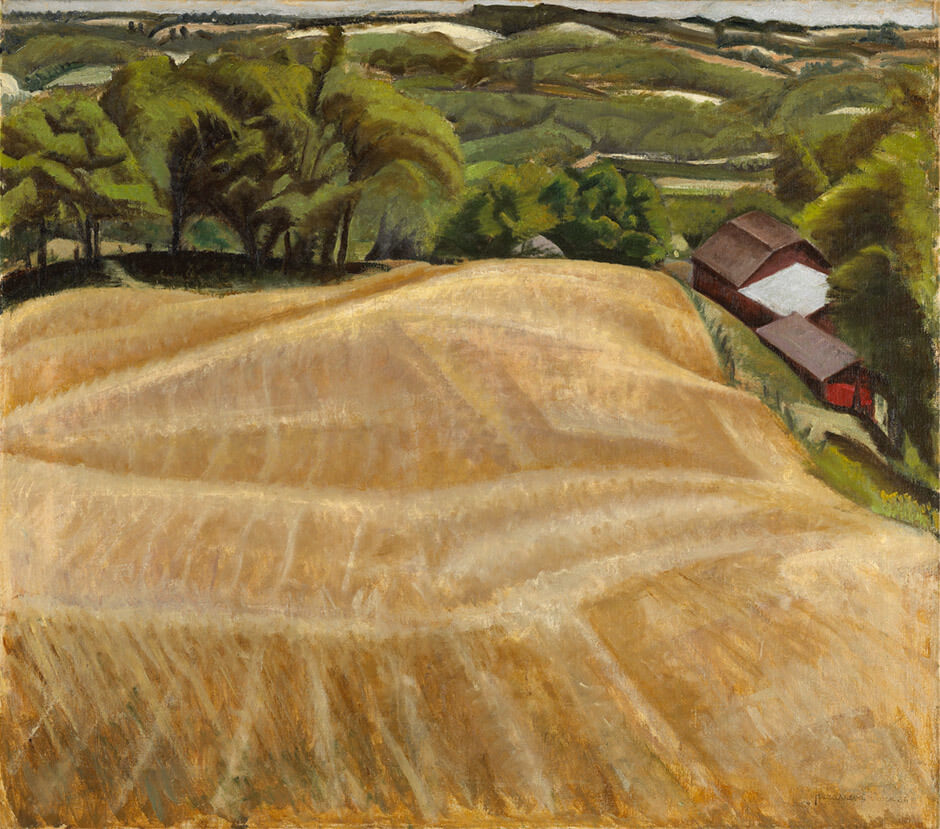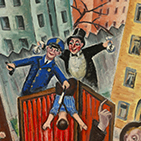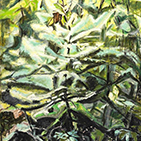Wheat Field 1936

Paraskeva Clark, Wheat Field, 1936
Oil on canvas, 63.6 x 76.5 cm
National Gallery of Canada, Ottawa
When Clark first arrived in Canada from Europe, she complained that the art in her new country was all “landscape, landscape, landscape.” Ironically, in the years that followed she produced more landscapes than still lifes, portraits, or canvases with a social purpose—the works for which she is best known. Douglas Duncan purchased Wheat Field, probably from Clark’s first solo exhibition at the Picture Loan Society in 1937.
Wheat Field was painted near Inglewood, Ontario, within driving distance northwest of Toronto. The Clarks began visiting the Caledon Hills sometime around 1934, and the area continued to provide Paraskeva with subject matter into the early 1950s. She contributed Caledon Farm in Spring, 1945, to the Sampson-Matthews silkscreen project that same year.

Clark’s painting shows an understanding of mass, and she models form with the application of colour—she sculpts with paint, rather than draws. Her landscape with a wheat field is a more solid thing than the view painted the same year by her friend Carl Schaefer (1903–1995), perhaps as a dialogue between members of the same artistic community. Clark’s landscape, with its high horizon and viewpoint, is indebted to the theories of perspective held by her teacher Kuzma Petrov-Vodkin (1878–1939). Only a narrow sliver of sky is indicated at the very top of the canvas. Schaefer’s sky occupies almost one-third of the picture, which, in combination with the variegated field of staccato brushstrokes, renders his landscape a lighter, airier view. Both, as cultivated fields, describe human intervention on the land: Clark’s landscape features a farmhouse and a footpath, while Schaefer’s describes the labour-intensive arrangement of sheaves. Clark had successfully brought her Russian training to a Canadian subject.
Art critic Graham McInnes, who championed Clark’s work, showcased this painting in the August 1937 issue of Canadian Forum. This didactic article focused on Clark’s interpretation of Paul Cézanne (1839–1906), as demonstrated in Wheat Field. He described how a sense of the “solid bones of the earth beneath the soil which caress every undulation” and the distances and the shimmer of mid-summer foliage were all created through form, and form through colour. In a review in Art Digest (New York) the previous year, McInnes had praised Clark for bringing her innate sensibility and her talent for conceiving plastic relationships to the Canadian scene.

 About the Author
About the Author
 More Online Art Books
More Online Art Books
 Acknowledgements
Acknowledgements